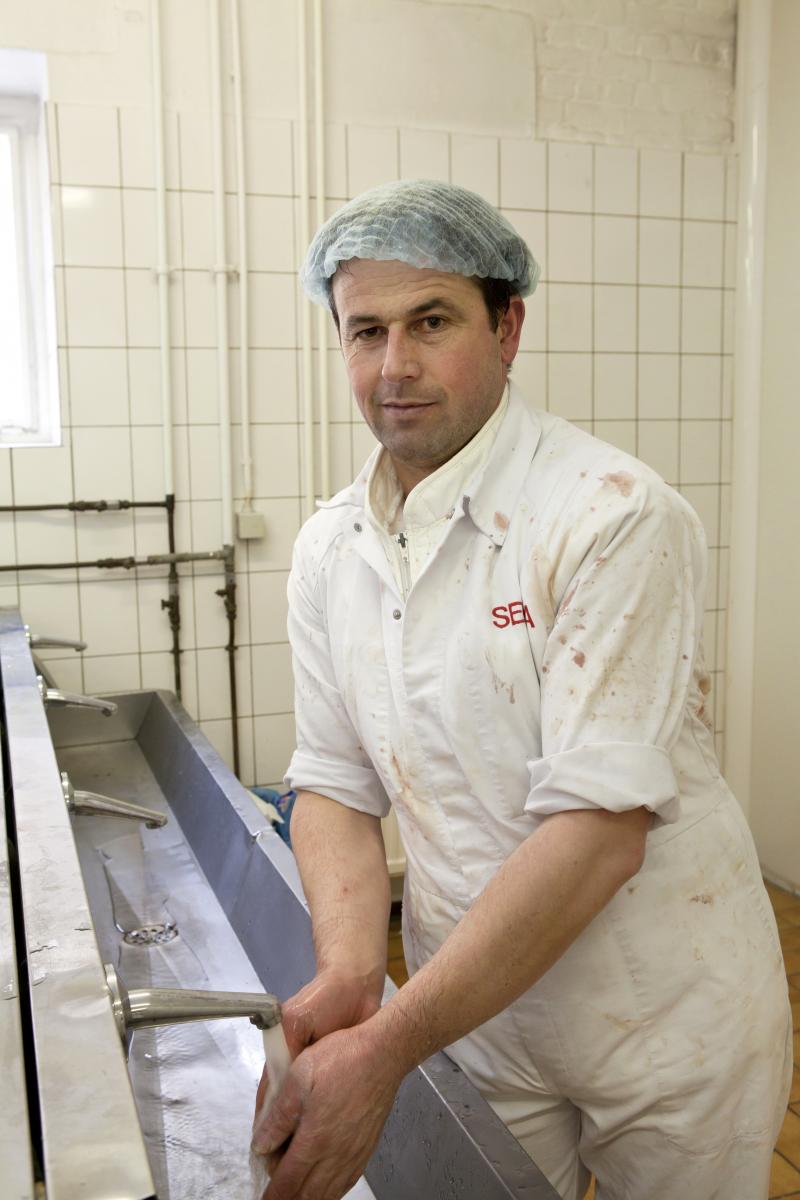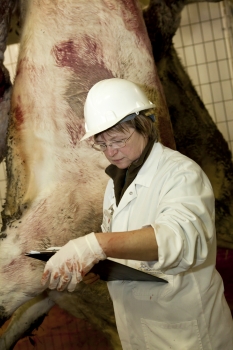Slaughterlines get degree A Certificate from BRC
The preparations for a BRC audit take more time and energy than one would expect. It also requires a intensive collaboration between the departments or services involved (technical service, chiefs of production, quality control department, …).
After many years of preparation, our slaughterlines went through a first audit early 2010. We were pretty proud when obtaining a B-certificate, not a bad result at all for a first audit. Earlier this year a new audit resulted in an A-certificate, which makes us all extremely proud.
This certificate means that in terms of foodsafety and hygiene we can compete with the top of foodstuff producers.
Meeting the BRC requirements involves
considerable operational consequences
 The British Retail Consortium is an organization representing the most important English retailers. This organization has listed and published a series of requirements and specifications to be taken into account by all producers of foodstuffs delivering goods to retailers. This list has eventually become the worldwide standard, so much so that practically all big customers (supermarkets, big factories, …) demand that this list or one similar to it should be respected. HACCP stands for “Hazard Analysis and Critical Control Points” and makes an inventory of all risks foodstuffs can be exposed to.
The British Retail Consortium is an organization representing the most important English retailers. This organization has listed and published a series of requirements and specifications to be taken into account by all producers of foodstuffs delivering goods to retailers. This list has eventually become the worldwide standard, so much so that practically all big customers (supermarkets, big factories, …) demand that this list or one similar to it should be respected. HACCP stands for “Hazard Analysis and Critical Control Points” and makes an inventory of all risks foodstuffs can be exposed to.

One needs to have worked out a comprehensive HACCP and quality care system. This is to say that first of all, a thorough study needs to be made about how one is going to produce and define where things could possibly go wrong. Those “risk areas” (Critical Control Points) must be continuously monitored. All relevant information about the production circumstances that could have an influence on the quality of the product must be written down and kept up with. All possible complaints from customers e.g., need to be kept up and submitted to frequent analysis. Production facilities also need to meet certain requirements, e.g. the risk of broken glass needs to be kept as small as possible, a well thought of plan for putting down vermin should be in place , the premises should be well kept and an exhausive cleansingplan drawn up.
The product itself, the production process and all personnel should fulfill a number of requirements too. Each faze in the production process needs to be defined and put down in writing in clear working instructions and training should be given on a regulat basis, etc.
By means of an audit, an independant organization defines whether a company abides by the BRC norm. A classification from A to D is being maintained, A meaning excellent, with less than 10 minor deviations from the norm. In the worst case one gets a D qualification, which means that the request for certification is being rejected. Audits take place on an annual basis.

